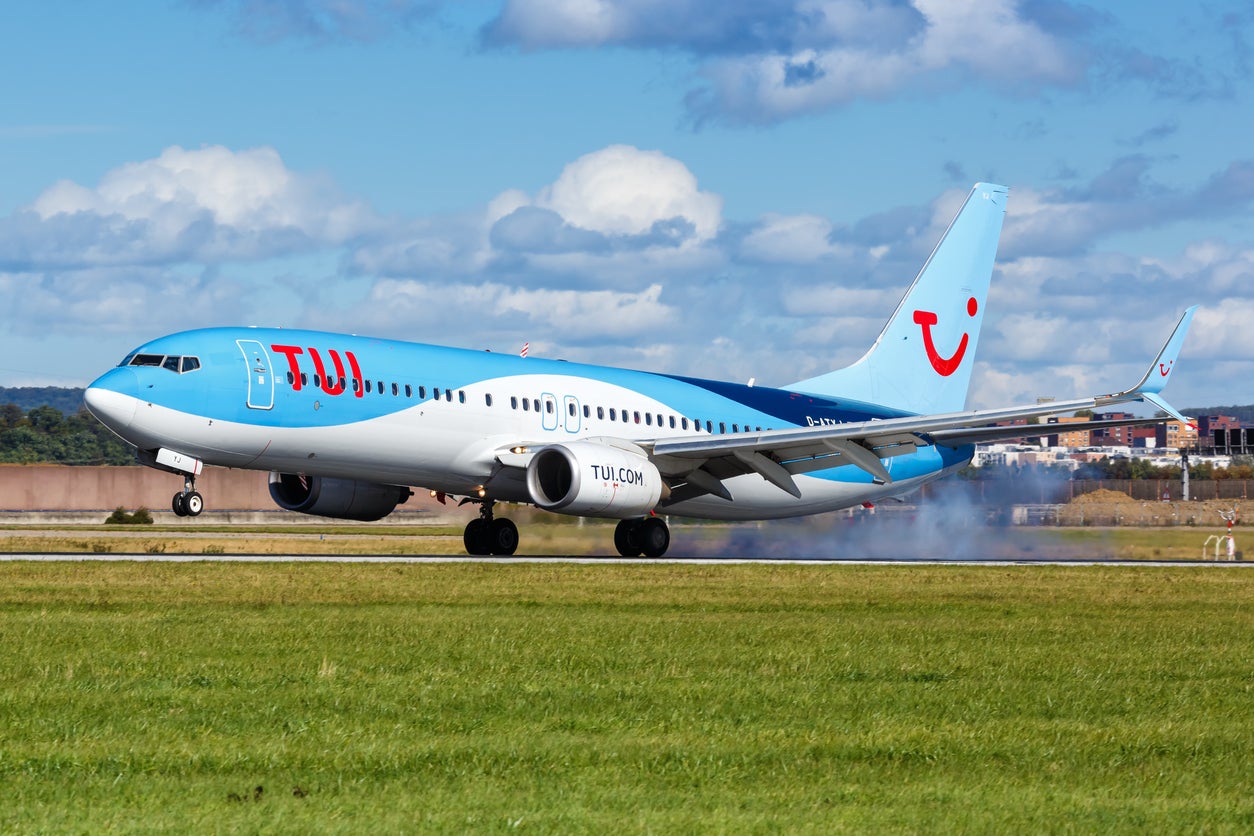Tui flight makes emergency landing after tail hits runway during take-off
Pilot dumped fuel over the Lake District before returning to Manchester Airport in ‘emergency mode’

A Tui flight was forced to make an emergency landing last month after its tail clipped the runway on take-off.
Flight TOM 2384 took off from Manchester Airport at 8.30am on 9 March, bound for Fuerteventura, but had to return to the airport 45 minutes later, reports Manchester Evening News.
After the plane’s tail “contacted the runway surface”, the pilot set about “dumping fuel” at around 10,000 feet, flying around the Lake District before returning to Manchester Airport in “emergency mode”.
The aircraft, a Boeing 737-800, was able to land safely at the airport and customers waited seven hours before boarding a different plane to their destination.
A Tui spokesperson told The Independent: “Flight TOM2384 from Manchester to Fuerteventura conducted a precautionary return landing after experiencing a technical issue on Wednesday 9 March 2022.
“The safety of our passengers and crew is our number one priority and everyone was safely disembarked. A new aircraft was sourced and customers arrived in Fuerteventura shortly after. We would like to apologise to those customers affected and thank them for their patience and understanding.
Tail strikes generally occur when an aircraft takes off at too high an angle, and though relatively common, pilots are trained to avoid them.
Although a minor strike is not necessarily dangerous, any kind of tail strike can weaken the aircraft so it must be inspected as soon as possible before continuing to operate.
A Boeing study from 2004 showed that more tail strikes occur on landing than on takeoff - 82 per cent of 737-400 tail strikes were found to have occurred on landing, while 70 per cent of 737-800 tail strikes occurred on landing.
Aircraft are more susceptible to tail strikes during windy conditions.
Another Boeing report on this type of incident found that pilot experience can be a factor: “The amount of flight crew experience with the model of airplane flown is a more significant factor. While the tail strike may occur to pilots with abundant flight time in a model, most occur to pilots transitioning from one airplane model to another and have fewer than 100 hours of flight time in the new model.
“Incidents are greatest among pilots during their first heavy-weight operations in the new model, especially when the weather is marginal.”
In January 2022, a JetBlue Airbus A320 suffered a tail strike while taking off at Yampa Valley Regional airport in Colorado.
A passenger captured the significant jolt in the cabin as the plane’s tail struck the runway on video, with people onboard audibly shocked by the bump.
Join our commenting forum
Join thought-provoking conversations, follow other Independent readers and see their replies
Comments
Bookmark popover
Removed from bookmarks